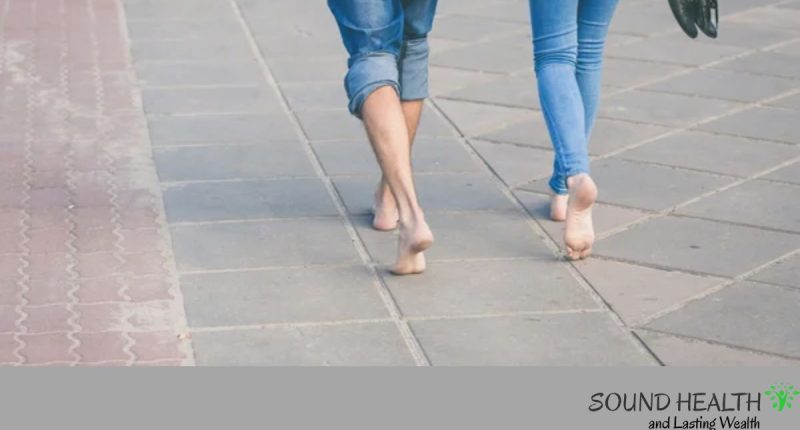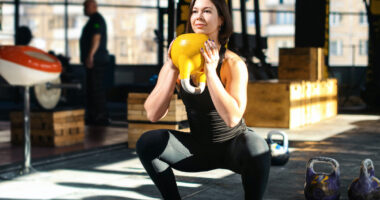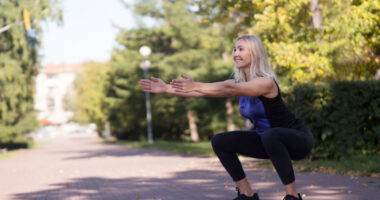Effects of walking barefoot on cold floor: Benefits & Risks – Imagine the sensation of your bare feet against the cool, smooth surface of a marble floor. While some might find it unpleasant, others relish the invigorating experience. Walking barefoot on a cold floor has been a practice for centuries, and there are several potential benefits and drawbacks associated with it. Continue reading to learn the positive and negative effects of walking barefoot on cold floor.
Positive impacts of walking barefoot on a cold floor
While walking barefoot on a col d floor may not be everyone’s cup of tea, it offers several potential health benefits that can improve your overall well-being. Here are some of the positive impacts of this practice:
1. Enhanced Circulation
When your feet come into contact with a cold surface, your blood vessels constrict temporarily. This response helps to conserve heat and protect your extremities. However, upon moving back to a warmer environment, the blood vessels dilate, allowing for a surge of blood flow to the feet. This cyclical process promotes improved circulation throughout the body, potentially enhancing nutrient delivery and oxygen supply to various tissues.
2. Improved Sensory Processing:
The soles of your feet are densely packed with nerve endings that play a crucial role in sensory perception and balance. Walking barefoot directly engages these receptors, providing constant feedback to the brain about the texture, temperature, and even the slope of the surface you’re walking on. This enhanced sensory input can improve balance, proprioception, and overall body awareness.
3. Stress Reduction:
The cold temperature associated with walking barefoot can trigger the parasympathetic nervous system, responsible for relaxation and stress reduction. This activation promotes the release of calming hormones like endorphins and serotonin, which can help alleviate stress, anxiety, and even symptoms of depression.
4. Foot Strengthening and Flexibility:
Traditional shoes often provide excessive cushioning and support, reducing the need for the muscles and ligaments in your feet to engage fully. Walking barefoot encourages your feet to work harder and adapt to the uneven surfaces, potentially strengthening the muscles and improving flexibility in your feet and ankles.
5. Pain Relief:
The increased sensory awareness and improved balance associated with barefoot walking can help reduce pain related to overuse injuries, arthritis, or even chronic conditions like fibromyalgia. This is because the direct feedback from the feet helps you adjust your gait and posture, reducing undue strain on affected areas.
6. Connection to Nature:
Walking barefoot on natural surfaces like grass, sand, or even snow can provide a unique connection to the environment. This direct sensory experience can enhance your sense of well-being and reduce stress by fostering a sense of grounding and tranquility.
7. Improved Immune Function:
Some studies suggest that regular exposure to cold temperatures, such as walking barefoot on cold floors, may enhance the immune system’s ability to fight off infections. This is attributed to the activation of cold-inducible genes that promote the production of antibodies and immune cells.
8. Foot Health:
Walking barefoot encourages natural foot movement and encourages proper muscle development. This can help prevent foot deformities like bunions, hammertoes, and plantar fasciitis. Additionally, it can reduce the risk of blisters and other foot injuries caused by ill-fitting footwear.
ALSO READ: Aside disadvantages of sleeping on the floor: are there benefits?
Negative Impacts of Walking barefoot on a cold floor

While walking barefoot on a cold floor can offer potential health benefits, it’s important to be aware of the potential drawbacks:
1. Discomfort:
The direct contact with a cold surface can induce numbness, tingling, and even discomfort in the feet. This is particularly true for individuals with sensitive feet or those unaccustomed to barefoot walking.
2. Increased Risk of Muscle Cramps:
The exposure to cold temperatures can trigger muscle contractions, potentially leading to cramps in the feet, calves, or other leg muscles. This is especially common in individuals who are not physically active or those who have a history of muscle cramps.
3. Potential Immunosuppression:
While some studies suggest potential benefits of cold exposure on the immune system, excessive exposure to cold temperatures may suppress the immune response, making individuals more susceptible to infections. This is especially concerning for individuals with underlying health conditions or weakened immune systems.
4. Risk of Foot Injuries:
Walking barefoot on unclean floors can increase the risk of cuts, scrapes, and other foot injuries. Additionally, uneven surfaces or debris on the floor can lead to falls and sprains.
5. Sensitivity to Temperature Fluctuations:
Walking barefoot can make individuals more sensitive to temperature fluctuations, making it uncomfortable to move from a warm room to a cold one.
Recommendations
To minimize the potential drawbacks of walking barefoot on a cold floor, consider the following recommendations:
Here are some recommendations to minimize the drawbacks and maximize the benefits of walking barefoot on a cold floor:
| Drawback | Strategies |
|---|---|
| Discomfort | * Start gradually and increase the time spent barefoot on cold surfaces. * Choose suitable floors to walk on, such as clean, smooth surfaces. * Protect sensitive areas with socks made from breathable materials like cotton or wool. * Warm up your feet beforehand by gently flexing and stretching them. |
| Increased risk of muscle cramps | * Stay hydrated by drinking plenty of fluids throughout the day. * Stretch regularly, especially before and after walking barefoot on a cold floor. * Start gradually and increase the time spent barefoot on cold surfaces to allow your body to adapt. |
| Potential immunosuppression | * Maintain a healthy lifestyle by eating a balanced diet, getting regular exercise, and getting enough sleep. * Avoid excessive cold exposure, especially if you have underlying health conditions. * Consult with a healthcare provider if you have any concerns about walking barefoot on a cold floor. |
| Risk of foot injuries | * Walk on clean, smooth surfaces to avoid cuts, scrapes, and other injuries. * Be aware of your surroundings and watch out for potential hazards, such as uneven surfaces or debris on the floor. * Wear appropriate footwear when necessary, such as shoes with good traction, if you are walking on rough or uneven surfaces. |
| Sensitivity to temperature fluctuations | * Acclimate to temperature changes gradually by starting with short periods of barefoot walking on a cold floor and gradually increasing the duration. * Wear socks or shoes when moving between warm and cold environments to help regulate your body temperature. |
By following these recommendations, you can enjoy the potential benefits of walking barefoot on a cold floor while minimizing the risks.
Other things you can do

Gradual Introduction: Start with short durations and gradually increase the time spent barefoot on cold surfaces to allow your body to adapt.
Choose Suitable Floors: Avoid walking barefoot on dirty or uneven surfaces. Seek out clean, smooth floors with minimal debris.
Protect Sensitive Areas: If you have sensitive feet, consider wearing thin socks made from breathable materials like cotton or wool.
Warm Up Beforehand: Before walking barefoot on a cold floor, warm up your feet by gently flexing and stretching them.
Listen to Your Body: If you experience discomfort or pain, stop walking barefoot and wear appropriate footwear.
Overall, walking barefoot on a cold floor can be a beneficial practice when done safely and appropriately. However, it’s crucial to weigh the potential benefits against the potential drawbacks and take precautions to minimize discomfort and injury risk. Consult with your healthcare provider if you have any concerns about walking barefoot or have underlying health conditions.
Resouces
1. Researchgate: Long-Term Effects of Habitual Barefoot Running and Walking: A Systematic Review
2. Wileyonlinelibrary: Walking barefoot decreases loading on the lower extremity joints in knee osteoarthritis
Copyright © 2022 Soundhealthandlastingwealth.









